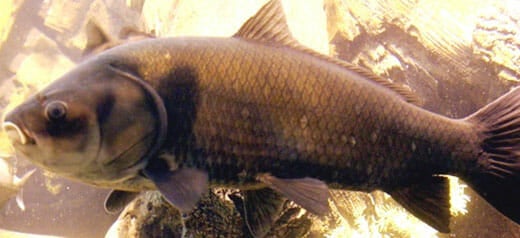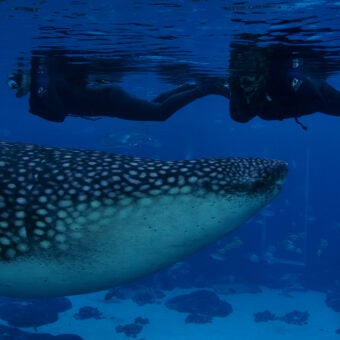-
Size
4 feet (1.3 m) -
Diet
Small fish, plants, small invertebrates -
Range
North America -
Habitat
Rivers, lakes and channels
Physical Characteristics
- Coloration is bluish-green on the back, shading to coppery-blue sides and a light, bluish-grey belly.
- Deeply rounded body with a large head and a sucker-type mouth with large lips. Mouth oriented forward rather than downward, distinguishing this species from other buffalo fish.
- Maximum length of approximately 4 feet (1.3 m) and a maximum weight of 70 lbs. (32 kg).
- Its name refers to the size of its mouth in relationship to other species of buffalo.
Diet / Feeding
- Benthic feeder; diet consists of copepods, cladocerans, bottom plants, aquatic insects, small fish and fish eggs.
Range / Habitat
- Occurs in North America from the Hudson Bay, the lower Great Lakes and Mississippi River basins and Montana south to Louisiana. It can also be found in river basins from Ontario to Saskatchewan in Canada.
- Mainly inhabits channels, deep pools and backwaters of small to large rivers, as well as lakes and large impoundments. Often found in schools in mid-water and near the bottom.
Reproduction & Growth
- Oviparous- egg-laying species.
- Reaches sexual maturity at about three years of age.
- Spawns in the spring.
- Female scatters about 400,000 eggs over the bottom in shallow water.
Conservation Status
- “Least Concern” on the IUCN Red List.
Additional Information
- Similar to the smallmouth buffalo, but with a mouth that is oriented forward rather than downward.
- Lifespan of 7-8 years.
- Predators: northern pikes, black bullheads and walleyes.






